Finding the Inner Foodie
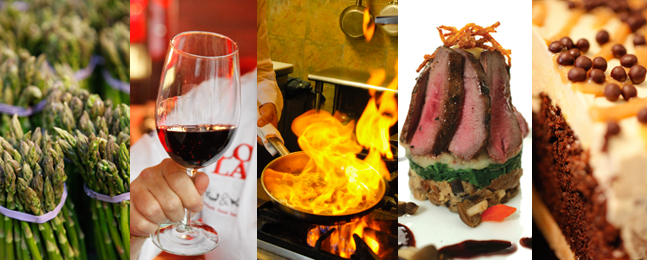
by THERESA PEASE
Paula Shoyer ’86 first encountered food production as a preschooler when she received an Easy-Bake oven as a gift, and Ruth Fine Handy ’56 worked in the hot cornfields of Southeastern Massachusetts back when she was smaller than even the tiniest stalks. Kenneth Osherow ’88 fell in love with a neighborhood, and Nivia Medina Pina, M.S.’01, with a fellow Latino immigrant who had a penchant for plantains. Pichet Ong ’89 turned out his first cookie at age 5, but later made a detour to architectural school; Michael Ginor ’85 spent his coming-of-age years in the Israeli army; and Jonathan Burrows ’65 directed operas in New York. As a kid, Lisa Schiffman ’85 never met an exotic food that tempted her palate.
Point is, foodies are found, not made. Each of these alumni — and the many others spotlighted on these pages — took a different path, and each ended up discovering the same destination: a life of passion in or around the kitchen, dining table or farm.
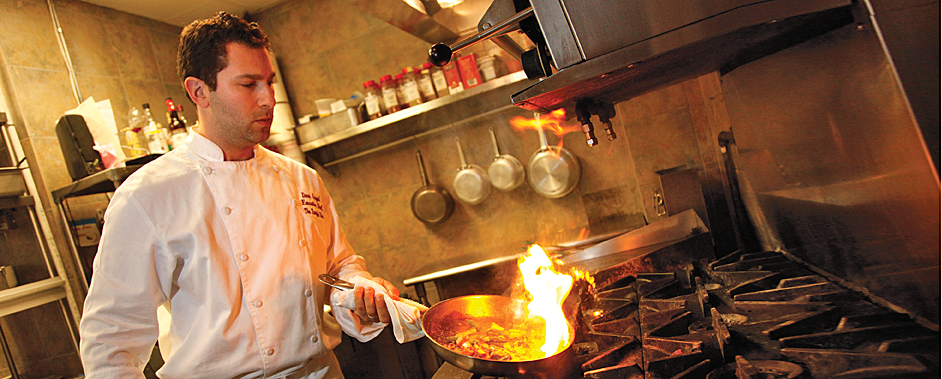
Mike Lovett
page 2 of 15
Who’s in the kitchen?
Dine and Wine au Natural
David Seigal ’98 started his career on Wall Street. But when the twin towers came down, the financial markets did the same, taking his job at Bear Stearns with them.
Remembering that he’d enjoyed working at Waltham’s Watch City Brewing Company as an undergrad, Seigal picked up the phone and started calling New York’s top eateries. At Aureole, a voice said, “Do you have knives? Then come to the back door on Saturday and be prepared to work a 12-hour shift.”
“It’s not like landing a job on Wall Street,” Seigal laughs. “In the cooking world, they’re willing to try you out; if they like you, they teach you what you need to know.”
Seigal proved an apt pupil, and as his career progressed he gained a following of epicures who hungrily trailed him to his current spot as executive chef of the popular year-old Tangled Vine Wine Bar and Kitchen on New York’s Upper West Side.
By definition, wine bars present connoisseurs with a huge selection — Tangled Vine has upward of 40 wine choices by the glass, with another 200 available by the bottle. But what distinguishes the Tangled Vine in its class is a commitment to serving only wines that are organic, biodynamic or sustainable.
“The broader term is ‘natural winemaking,’” Seigal says, “and it means the wines aren’t tampered with. There are fewer additives, safer farming practices and more care for the sustainability of the vineyard. What you’re getting is the taste of the grapes, which makes for a better wine.” While most wine bars serve food as an afterthought, Seigal’s venue has a full gourmet menu of Mediterranean cuisine. A signature dish is fideos negros — black noodles — a classic Catalan entree made with toasted angel hair pasta, squid ink and cuttlefish.
“Not enough attention,” the chef says, “is paid to the pairing of great food and great wine. But when you enjoy them together, they really enhance and heighten each other.”
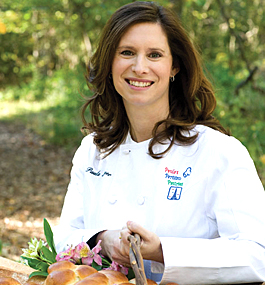
Courtesy Paula Shoyer
Paula Shoyer ’86
page 3 of 15
Leading a Kosher Revolution
Paula Shoyer ’86 started out as a pre-med, but after what she calls “a bad chemical reaction in the lab,” she decided a better place for her might be the courtroom. Then, following law school and a distinguished legal career, she found a new berth in unexpected quarters: the kitchen.“When I entered cooking school in Paris,” Shoyer says, “I wasn’t looking to change careers; I just thought my family would eat well for the next 60 years.” But after an enthralling pastry course at the Ritz-Escoffi er Ecole De Gastronomie Française, she decided to give food a go.
“I started a catering business out of a tiny kitchen in Geneva,” she says. “Then a Jewish organization asked me to teach a cooking class, in French. When I moved back to the United States, I continued teaching and edited two cookbooks in the ‘Kosher by Design’ series. Finally, I decided to write my own.”
While running Paula’s Parisian Pastries Cooking School in Chevy Chase, Md., Shoyer spent fi ve years putting together “The Kosher Baker.” The lushly illustrated volume, published by Brandeis University Press in 2010, contains more than 160 dairy-free recipes that built on what she learned in Europe.
Rebelling against a childhood filled with parve desserts (no butter, milk or cream) that tasted like “sugar-coated cardboard,” Shoyer tempts readers with treats ranging from simple (madeleines, lemon tea cookies) to elaborate (seven-layer chocolate ganache cake, cranberry pumpkin frangipane tart).
After getting enthusiastic reviews for “The Kosher Baker,” Shoyer is now developing a Passover dessert book. In addition, she regularly posts sweet and savory recipes on her website at paulaspastry.com and keeps an enticing blog at kosherbaker.blogspot.com.
“My goal,” she says, “is to start a kosher baking revolution and change people’s views of parve desserts.”
Climbing the Culinary Ladder
 |
| Adrian Hoffman ’93 |
Adrian Hoffman ’93 did not have a sophisticated palate as a kid. With vegetarian parents, he hadn’t even heard of a lot of dishes he now features as vice presidentandculinary director for California’s Lark Creek Restaurant Group, which includes the Tavern at Lark Creek in Larkspur and Fish Story in Napa. But a job as a busboy in an Italian restaurant at age 13 led to a promotion to pizza chef and on up the food chain.
Upon graduation from Brandeis, Hoffman took a pivotal job as a cook at a now-defunct Italian restaurant in Boston. “It was the first place I’d been where I was surrounded by people who were really into the culture of food,” he remembers. For a few years, Hoffman worked in a succession of restaurants that would make a gourmet salivate: Moose’s in San Francisco, the River Café in Brooklyn, Le Cirque in New York, Olive’s in Boston. An apprenticeship at Italy’s Michelin-starred Ristorante Romano whetted his appetite for regional cuisine. He opened Tamarind in Israel for celebrity chef Todd English.
His career took off in 2000 when he became head chef at Lark Creek’s award-winning One Market restaurant and scored three and a half stars from the San Francisco Chronicle. In 2002, he was among five national finalists for the James Beard Foundation’s Rising Star of the Year award.
Today, Hoffman supervises chefs at the distinguished Lark Creek group’s 12 Bay Area locations, masterminding such tasks as menu development, kitchen design and creating new venues.
“Right now,” he says, “we are working on starting a Neapolitan pizzeria, and I am trying out recipes. I actually went to Naples to study for a week with a famous pizzaiola.
“The food world provides me with a very balanced discipline. I get to work with my hands, but none of it would mean anything unless I really loved the culture and the history and the tradition of how food has developed regionally.”
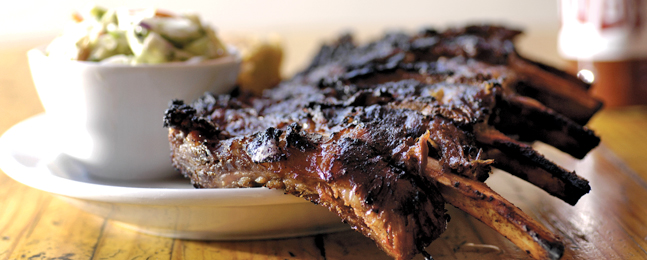
Tanit Sakakini
page 4 of 15
Curtains Up for Mr. Cecil
With legendary Broadway writer Abe Burrows as his uncle, and with parents who took him to see “Annie Get Your Gun” at age 5, Jonathan Burrows ’65 naturally gravitated toward show biz.
After graduating as one of Brandeis’ first two theater majors and serving in the military, he made an auspicious debut, directing Placido Domingo in “Carmen” with the New York City Opera. Burrows also produced several plays in New York before being called to Hollywood, where his role as assistant director on “Ryan’s Daughter” was a prelude to other high-profile projects, including “Fletch” and 16 other major films.
Then, at the turn of the century, Burrows raised the curtain on a show that has been packing them in nightly ever since: not a drama or musical, but a one-of-a-kind barbecue restaurant called Mr. Cecil’s California Ribs.
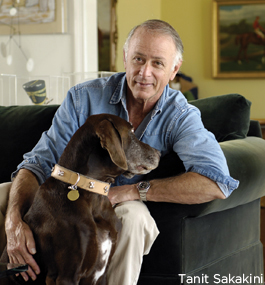 |
| Jonathan Burrows ’65 |
The eatery, which specializes in what Bon Appetit magazine has categorized as a pioneering California-style barbecue with an Asian influence, opened in 2000 in a kitschy chili-bowl-shaped structure on Pico Boulevard in West L.A. Today, the busy chain boasts additional locations in nearby Sherman Oaks and Manhattan Beach, and Burrows is negotiating to open a fourth venue at Downtown Disney, outside the theme park’s main gates.
The restaurants are a magnet for celebrities. It’s not unusual for rib-chomping guests to rub greasy elbows with Tom Hanks, Britney Spears, Barbra Streisand, George Lucas, Harrison Ford, Jessica Simpson, Adam Sandler, Jehuda and Shula Reinharz, Pink and other luminaries.
“One of the great things about barbecue is that it crosses social, economic and ethnic lines. There’s a big clientele out there,” says Burrows. Bon Appetit has listed Mr. Cecil’s among its 20 top barbecue sites nationwide, and the culinary impressario has twice been invited to prepare meals at the prestigious James Beard House in New York.
Does Burrows miss show business?
“The restaurant business,” he proclaims, “is show biz. And every night is opening night.”
page 5 of 15
A Blue Ribbon in Any Language
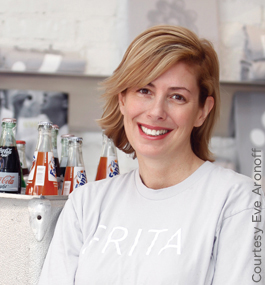 |
| Eve Aronoff ’92 |
As a foodie, Eve Aronoff ’92 has done it all — from hawking hot dogs at Fenway Park as an undergrad to turning out worldclass dishes as a student at theCordon Bleu cooking school in Paris. She has won a coveted invitation to cook at the James Beard House in New York and appeared on the reality show “Top Chef.”
In Ann Arbor, Mich., her name became synonymous with fi ne dining when she started a restaurant called Eve. Famous for its creative blend of French cookery with African, Cuban and Vietnamese influences, the chic venue was celebrated in her innovative cookbook “Eve: Contemporary Cuisine Methode Traditionnelle.”
In January, the local celebrity broke Ann Arbor’s heart by shutting the doors on Eve after seven years and shifting all her attention to Frita Batidos, a smaller place she had opened downtown just a month earlier.
In a way, Eve was the victim of its own success. While diners were thronging to the city’s Kerrytown neighborhood, the building itself was too small and Aronoff found herself turning patrons away, or subjecting them to a two-hour wait. It felt wrong. When the rent went up, she decided to close Eve.
While Frita Batidos — which evokes Aronoff’s memories of girlhood visits to Miami — has been earning rave reviews for its affordable Cuban-inspired food with “French influence,” it is definitely several notes down the scale from the famous Eve.
Key to the menu is the frita, a burger made of spicy chorizo sausage topped with shoestring potatoes. Other popular offerings include coconut-ginger rice, conch fritters and doughnut-like churros with chocolate dipping sauce.
“Rather than reproducing an authentic Cuban eatery,” she says, “I concentrate on using fresh, local, seasonal foods to prepare dishes that blend a variety of textures and flavors.”
Sweet at the Top
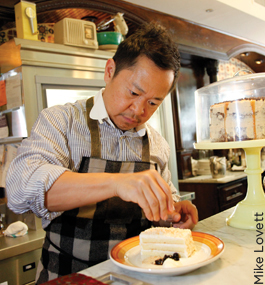 |
| Pichet Ong ’89 |
Google the name Pichet Ong ’89 and your computer will sing like a one-armed bandit about to spew quarters. Some of the 65,800 hits will lead you to features in Food & Wine and Bon Appetit. Others may highlight exuberant reviews of his new Thai restaurant, Qi Bangkok, which opened near Times Square in May.
Ong wouldn’t be a culinary phenom if it weren’t for computer aided design. Born in Thailand, he grew up an aspiring architect. But after attending Brandeis on a Wien International Scholarship and earning a master’s in architecture at UC Berkeley, he found building design too mechanized for his taste. “In the creative process, I much prefer working with my hands to turn ideas into reality,” Ong says, “and I realized I could always count on doing that as a chef.”
Excited, Ong found an apprenticeship at the Bay Area’s famed Chez Panisse. Soon he had a blue ribbon resume that included San Francisco’s La Folie, Olive’s in Boston, and what he calls “a whole slew of restaurants around the world” established in collaboration with New York’s famed Jean-Georges Vongerichten.
Designated one of the Top Ten Pastry Chefs in America by Pastry Arts & Design magazine, Ong penned the acclaimed 2007 cookbook “The Sweet Spot: Asian-Inspired Desserts,” featuring coconut soufflés, jasmine rice pudding, and sake sauteed plums with ginger and star anise. Equally adept at savory cooking, he’s been nominated multiple times for James Beard Foundation awards. Among the successful restaurants he has started are Patroon, Spice Market and P*ONG.
Today, through Batch Bakery, Ong continues supplying luscious desserts to many high-end eateries. He recently opened Coppelia, a Cuban restaurant in Manhattan’s Chelsea neighborhood, and is finishing up a new cookbook, “Desserts on a Whim.” Reaching back into his design background, he is launching a line of kitchenware of his own devising, including aprons, clogs and cooking tools.
This year, Ong will unveil a new collaborative venture: A Butcher and a Baker, a specialty retail store featuring fi ne kosher meats, pastries and sweets in New York City.
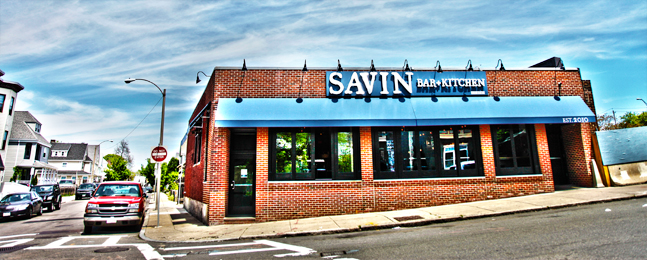
Mike Lovett
page 6 of 15
The Café on the Corner
Not all successful restaurants seek international fame or spawn celebrity chefs. In the Boston area, several culinary entrepreneurs have sprouted small eateries that cater to locals, enriching their particular neighborhoods while adding diversity to the Hub food scene.
Savin’ Savin Hill
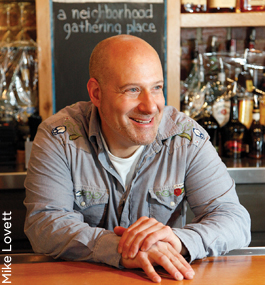 |
| Kenneth Osherow ’88 |
He guessed correctly. “Ten years ago, you could get a three-family house here for under $200,000,” says Osherow. “Now, there are million-dollar homes within a 5-minute walk of my office.”
Osherow has been an active force in the neighborhood’s rebound. When At Home relocated to Savin Hill, the building Osherow purchased housed McKenna’s Café, a 19-seat breakfast and lunch place he felt had growth potential. The inner-city entrepreneur took over the restaurant, expanding its menu and adding three dozen seats. Today, McKenna’s Café packs them in for power wraps, granola-crusted French toast and, on Wednesdays, a to-die-for beef stew. On weekend mornings, breakfast patrons come prepared to stand in line.
He didn’t stop there. When a salon in his building closed, Osherow launched Savin Scoop, serving coffee, baked goods and locally made ice cream. And when a popular tavern across the street came close to being shuttered in 2010, he and a business partner invested almost $1.5 million into reincarnating it as the 150-seat Savin Bar and Kitchen, featuring upscale décor, sangria made from a secret recipe, and American bistro food.
A neighborhood resident himself, Osherow says, “They are starting to call it ‘Savin Village,’ and you can see the signs of change: a little antiques store, a small gourmet shop, a pretty clock erected in the square.”
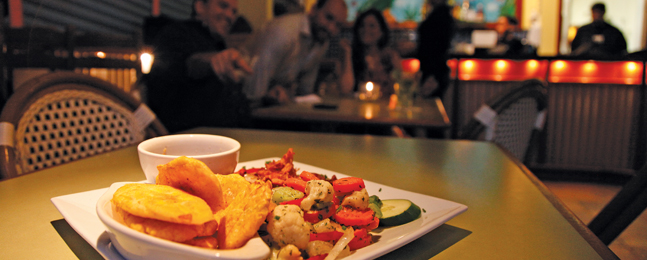
Mike Lovett
page 7 of 15
Plantains and Pigeon Peas
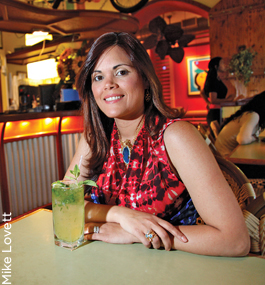 |
| Nivia Medina Pina, M.S.’01 |
Tell a dedicated foodie you’re headed to Blue Hill Avenue in Roxbury for a yummy repast, and he’ll say enviously, “Oh! You’re going to Merengue!”
The Boston hot spot, named for a Latino dance, has for a decade been drawing patrons into its inner-city neighborhood for delicious Caribbean fare. Behind its unimposing facade, owners Nivia Medina Pina, M.S.’01, and her husband, Hector, excitedly point out original oils by the top-ranking Dominican artists of the day, alongside framed covers of The Boston Globe, Boston and Yankee magazines, and other publications listing Merengue among the city’s best eateries.
Photos of notables show they couldn’t agree more. David “Big Papi” Ortiz? He hangs out there with Red Sox teammates. Dominican president Leonel Fernandez? The head of state stops by on every visit to the Hub. Pulitzer Prize-winning author Junot Diaz? Yes, the two Pina children’s godfather eats here, too.
The regional menu featuring signature beefsteak, chicken and shrimp in Creole sauce, and red snapper in coconut sauce brings them all to Blue Hill Avenue along with local pols, media folks and hip young Latinos. Jonesing for fried plantains or green pigeon peas? This is where to get them.
Hector, a computer science major from the Dominican Republic, never meant to be a restaurateur. But in 1994, he bought a tiny diner, started cooking homeland specialties from memory, and found his five tables were always filled. A few years later, the City of Boston funded his proposal for expansion under its Community Development program, and he met Nivia, a Puerto Rican biochemistry graduate student at Brandeis. Together, the couple planned, purchased, designed and opened the elegant 90-seat venue in 2001 and watched it skyrocket.
“We are strongly committed to our community,” Nivia says. “We love what we do, and I think we do it well.”
From Milk Street to Wall Street at 30
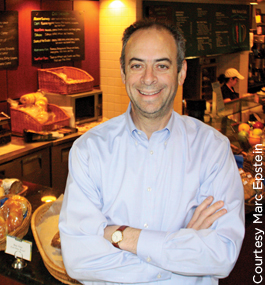 |
| Marc Epstein ’79 |
Marc Epstein ’79 entered the world of the palate while still in college, launching a summer business called Eppy’s Frozen Yogurt in his hometown of Worcester, Mass. But his next foodie venture changed his trajectory forever.
“I decided to open a restaurant that was trendy — in those days, that meant vegetarian,” he says. “Since I had grown up in a kosher home, I decided to go kosher as well.”
The result was Milk Street Cafe, located at 50 Milk Street in the heart of Boston’s financial district. Serving local workers breakfast and lunch from Monday through Friday, Milk Street has been recognized in polls as the best kosher restaurant in Boston. Epstein takes the honor with a grain of kosher salt, noting that “there really isn’t much competition” in that arena.
Though Epstein intended to work in food service for a short while before entering law school, the world of torts and plea bargains never beckoned. This spring, Milk Street celebrated its 30th anniversary by opening a second venue at 40 Wall Street in New York. What’s more, the original location is now home also to a catering business (non-vegetarian, but still kosher) that had served 144 corporate clients on the day that Brandeis Magazine caught up with the restaurateur.
Epstein, who was celebrated by the Small Business Administration in Washington as the 2011 Massachusetts Small Businessman of the Year, says, “To me, the joy of having a restaurant is being in the hospitality business. Hospitality is what it’s all about.”
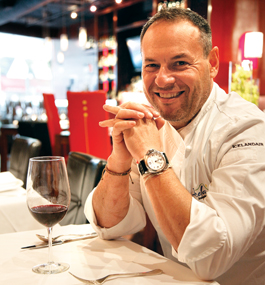
Mike Lovett
page 8 of 15
To Market, to Market
The arrival of foods and beverages on our dinner tables and in our markets does not tell the whole story. Here are some snapshots of Brandeis graduates who help produce the delectables that make life scrumptious.
Not Your Grandma’s Chopped Liver
New Yorker Michael Ginor ’85 was spending his junior year studying in Israel when he ascended into culinary heaven. His dad, a sabra, had come from America to visit and taken his son to a well-remembered taverna for a locally popular dish.
“It was fatty, with a nice, subtle flavor,” the younger Ginor says today. “Unctuous, rich, toward the sweet side. It had all the components people love in food. It was the best thing I had ever tasted.”
The delicacy was foie gras — literally, “fat liver.” Ginor did not know then that the dish, made from the fattened livers of waterfowl, was celebrated by gourmets dating back 5,000 years to the Pharaohs. But he did know he wanted to taste it again.
After earning an M.B.A. at New York University and working on Wall Street, Ginor joined the Israeli army. Back in his dad’s homeland, he experimented cooking foie gras in a variety of ways. “My favorite recipes,” he says, “are the simplest: cut up and shaped into a terrine, or just seared for 30 seconds on each side in a very hot pan and served alongside a salad with balsamic vinaigrette.”
When his military service ended, he returned to New York and set out in search of his favorite food. Sources were scarce, so in 1990 he decided to join forces with an Israeli partner and start his own company.
Today, Hudson Valley Foie Gras is the largest U.S. producer of the luxury foodstuff and exports its products all over the world. Like most contemporary producers of foie gras, Hudson Valley bypasses the traditional geese and instead raises foulard ducks, a hearty hybrid species. With foie gras selling near $40 a pound to restaurants and upward of $60 in gourmet shops, the company has $15 million in annual sales. It processes some 500,000 birds a year, using the breast, legs, skin and fat so that nothing goes to waste.
“There are people who believe making foie gras is inhumane, but once they learn about the process and listen to what veterinarians have to say, they realize that’s not the case,” Ginor says. He says the livestock at Hudson Valley are treated well and line up eagerly for the hand feedings needed to properly enlarge their livers — a process that mimics the overfeeding waterfowl naturally engage in before a migratory flight.
In 1999, Ginor published “Foie Gras: A Passion.” Half-history, half-cookbook, the volume won France’s coveted Prix La Mazille for the best culinary book in the world, among other accolades.
Now owner and chef at The New York Times-rated four-star restaurant Lola’s in Great Neck, N.Y., he also coordinates epicurean events internationally. In December 2010, PBS aired the pilot for “Runaway Chef,” a proposed weekly TV series that, if funded for production, will feature Ginor traveling the world — exploring, cooking and indulging.
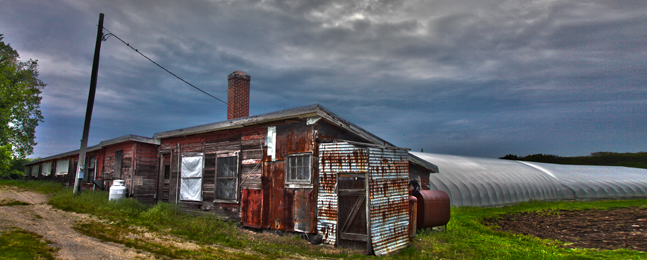
Mike Lovett
page 9 of 15
Fine Farming
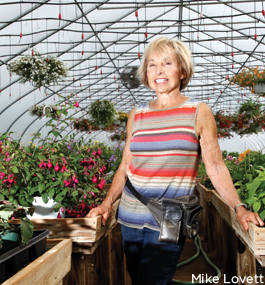 |
| Ruth Fine (Bennett) Handy ’56 |
From the first time she went into the field with her two sisters to stake a quarter-million tomato plants, Ruth Fine (Bennett) Handy ’56 knew farming was a hard business. In the hot and sticky cornfield of her family’s 120-acre farm in Attleboro, Mass., she felt suffocated. So midway through high school she was reassigned to the farmhouse, responsible for keeping her multigenerational family fed.
“In my home,” she recalls, “food was love. My bubbe would nag us to eat more — in those days people equated stockiness with strength and thought you needed to consume lots of red meat, egg yolks and butter to have energy.”
After attending Brandeis on scholarship, marrying at 18 and trying out a career as a Spanish teacher, she felt drawn back to the land, and as a young wife shared the homestead with the extended family. Within a dozen years, she had divorced her spouse and wed a handsome farmhand, George Handy.
“I am a farmer’s granddaughter, a farmer’s daughter and a farmer’s wife,” she says. “Many of our neighbors have sold their family farms to developers, but we love it here, and we are here to stay,” adds Handy, who occupies the same sprawling 17th-century farmhouse her grandparents bought in 1903 after fleeing czarist Russia.
Once among the largest working farms in New England, with 30 hired farmhands on board, Fine Farms is now both smaller and more profitable, largely as a result of creative downsizing, Handy says.
“We used to sell wholesale to grocery stores, and sometimes we’d get as little as 50 cents for a basket of peppers — but the baskets, called ‘lugs,’ cost more than that,” she explains.
So the family let their seasonal workers go, took most of the land out of cultivation, and began to dedicate their full efforts to producing stock for the Corn Crib, their popular farm stand on rustic Route 118.
Today, George cultivates 22 acres — plowing, planting, hoeing and harvesting — single-handedly. Ruth runs the stand, where locals flock daily in season to purchase a profusion of beans, peppers, lettuce, Swiss chard, beets, tomatoes and other gifts of the earth. In keeping with its name, the stand is best known for its sweet, delicious corn, picked fresh several times a day. The Handys sell pumpkins and cornstalks each fall, and winters find them in their seven greenhouses, planting vegetables, herbs, and annuals and perennials for sale to gardeners in the spring.
Over the years, Handy has learned to think of food differently from the way her grandparents did. The author of “The Fine Farm Cookbook,” a compilation of family history, cooking tips and simple, appealing recipes (see finefarms.com), she’s proud to be riding the wave of a contemporary movement that insists on healthy, fresh, local, sustainable foods.
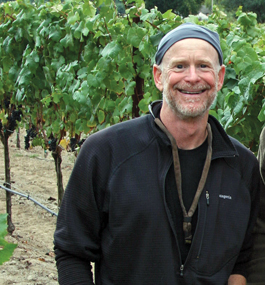
Photos courtesy Dutton-Goldfield Winery
Dan Goldfield ’79
page 10 of 15
Tasting the Earth
Dan Goldfield ’79 was 16 when he first laid eyes on the Russian River Valley during the final leg of a 1,400-mile bike trip. He fell in love with the rolling hills and valleys of coastal California.
Thirty-eight years later, Goldfield is at home in that landscape, cultivating grapes into fullbodied wine as co-owner of Dutton-Goldfield in Sebastopol, Calif. Goldfield did not inherit a sprawling winery passed down through generations. But he has always possessed something perhaps more crucial: a passion for the product and the meticulous, natural process by which it is made.
As a Brandeis freshman, Goldfield had an epiphany after sampling a 1969 Domaine de la Romanée-Conti Richebourg, now considered one of the world’s best Burgundies.
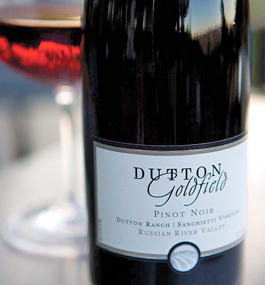 |
“I could taste the flavor of the land,” he says. “It was pure hedonism.”
As Goldfield began reading the classic “World Atlas of Wine,” he trained his palate. “I would look at a map and try a vineyard just because I wanted to see how that piece of land tasted,” he says.
That elemental bond with nature is what makes Goldfield “a world-class winemaker,” says business partner Steve Dutton, and it’s a key reason Sunset magazine named him 2010’s Winemaker of the Year.
Established in 1999, Dutton-Goldfield sources grapes from numerous small vineyards in the Russian River Valley. The neighborhood’s coastal fog makes it one of the coldest California wine regions, known for producing brighter, higher acidity grapes such as pinot noir and chardonnay. Goldfield perfected his craft with pinot in the early ’90s, years before the wine became commercially popular, because he loved its flavor. A few missteps can ruin an entire vintage, but the right craftsmanship produces a natural, sensuous product.
“The craft of winemaking is much more wonderful than the business,” Goldfield says. “It’s not always a lucrative pursuit. It entails high risk and high stress, but it’s a great connection with the earth.”
| — Evan Sweeney |
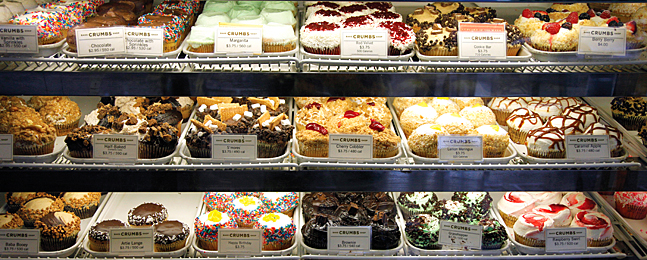
Mike Lovett
page 11 of 15
A Trail of Crumbs
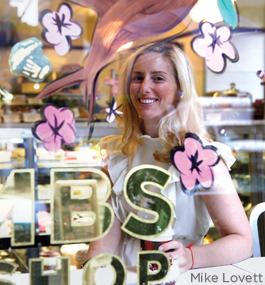 |
| Mia (Kozicharow) Bauer ’91 |
Mia (Kozicharow) Bauer ’91 set out to open a neighborhood bakery and instead helped launch a cupcake craze.
In 2003 B.C. (Before Crumbs), there were just a handful of gourmet cupcake shops in the country. Today, about 450 shops nationwide sell premium cupcakes (think up to $4 and 1,000 calories), while “Cupcake Wars” is the sweet spot of the Food Network’s programming.
Just as Ben & Jerry’s revolutionized the possibilities for ice cream, Bauer’s Crumbs Bake Shops have recalibrated attitudes toward the simple cupcake. Vanilla and chocolate are so yesterday, replaced by Crumbs creations like vanilla rose, blackbottom cheesecake brownie and four dozen other varieties.
From a single shop on New York’s Upper West Side, the Crumbs empire has grown into a $30 million-a-year business with 400 employees and 35 outlets in six states and Washington, D.C. Crumbs recently went public, and Bauer and her husband Jason have plans to expand to 200 shops around the country by 2014.
After leaving her job as a legislative lawyer at New York’s City Hall in 2002, Mia Bauer hoped to start a community-based business with Jason, an entrepreneur. They considered a hair salon for kids, but settled on a bake shop.
“I wanted a cute neighborhood bakery where people would come in and we’d know their kids’ names and how they liked their coffee,” Bauer says.
Bauer, who had started baking at age 6 to satisfy what she calls “a fierce sweet tooth,” was confident the desserts she’d been preparing for her parents, friends and Brandeis roommates through the years would appeal to a wider audience.
They did. Crumbs was a success from the day it opened on Amsterdam Avenue near 76th Street in March 2003 and soon had “lines out the door,” she remembers.
“We worked almost 24 hours a day those first few months — baking all night and working at the counter all day,” she says. “I don’t think we ever considered that the business might fail, but we did wonder at the beginning whether we could sustain the work schedule.” Some analysts are skeptical that the Crumbs business model is sustainable. Bauer thinks it is. “Since we opened, people have been talking about the ‘cupcake fad,’” she says. “What’s the statute of limitations on a fad? If eight years later you’re still growing by double digits, it isn’t a fad anymore.”
| — David E. Nathan |
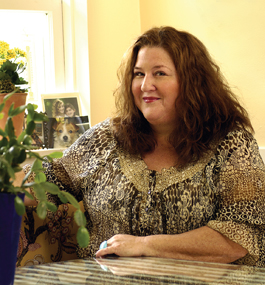
Tanit Sakakini
Lisa Field
page 12 of 15
Fringe Foodies
Not all culinary careers entail cooking, growing or serving food. Some publish books about it, blog about it, or use it as the centerpiece for beautiful parties — or beautiful lives. Here are a few Brandeisians who have made their lives in gastronomy’s wider circles.
To Live and Dine in L.A.
Lisa Field’s career began with a murder. The 1982 theater grad had been out of school a year when her parents threw a mystery party for her birthday, with Field cast as the killer. She performed with such panache that the event planner quickly signed her on for what Field calls “an old-fashioned, European-style apprenticeship.
“I learned how to plan a meal, transform a space, hire a staff and create a memorable occasion. It felt just like my work in theater,” says the former stage manager, now owner of cateringbyfield.com.
In her hometown of Los Angeles, Field has shaped parties for 50 to 4,000. Some involve huge companies like Kaiser Permanente; others are elaborate family fun, including bar mitzvahs costing in the six figures. The biggest bill she ever rendered: $300,000 — for a gathering with fewer than 200 guests.
Field’s popularity rests largely on strong contacts in the town’s all-important film industry.
“Out here, you have to know people — and they pass you along to other people,” she says. A gala wedding for Cosby Show producer Marcy Carsey, a Tinseltown trendsetter, led to more Hollywood insider events — including a TV Guide Emmy fete, a “Grey’s Anatomy” cast party and the “Catwoman” world premiere.
One challenge, Field says, was keeping Britney Spears’ wedding to Kevin Federline a secret from all but the bride’s mother — even Spears’ dad thought he was attending a cookout until he was handed a tuxedo on arrival.
The most unusual request she ever filled? “Naked pool boys,” she replies without hesitation.
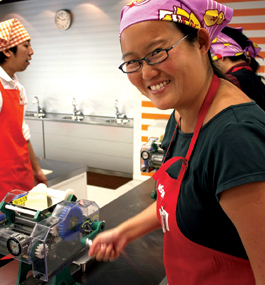
Courtesy WenLin Soh
WenLee Soh ’01
page 13 of 15
Around the World in 1,300 Meals
Some folks go on honeymoons with a bathing suit and a negligee and send back postcards. Singapore native WenLin Soh ’01 went with a laptop and camera and sent back mouth-watering recipes, tantalizing pictures and tales of culinary bliss.For 15 months, as she and husband Amir Shamsuddin ate their way across 40 countries, attending exotic weddings and festivals, volunteering at organic farms, and haunting kitchens on seven continents, Soh chronicled their adventures in a blog titled goingwithmygut.com.
Her columns tell of mashed potato cutlets in India, banana leaf-wrapped stingray in Singapore, whole grilled octopus in Bari, Italy. She recounts a wild boar udon lunch in Japan and a Kenyan goat feast. At an Arab-style mansion in Syria, the pair downed smoky hummus with grilled lamb and pine nuts, and at the Royale Eatery in South Africa they indulged in ostrich, a dish Soh deems “similar to kangaroo, but with a different twang.”
“When we married in 2008, we had paid off our student loans but were not yet saddled with a mortgage or kids,” explains Soh, a former journalist and business strategist. “So when the hedge fund Amir worked for shut down, we decided to do a really long honeymoon while the economy sorted itself out.”
Currently in London building a website called Edible Experiences, Soh and Shamsuddin still salivate over memories of fresh mackerel sandwiches purchased hot off a pushcart beside the Eminonu Bridge in Istanbul.
“You can understand a lot more about a place and its people if you really dig into what they eat and why,” Soh says. “It’s fascinating.”
Wigging Out in Washington
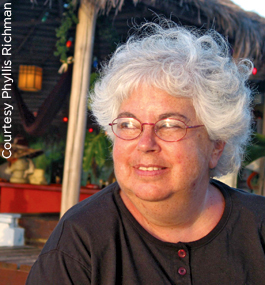 |
| Phyllis Richman ’61 |
“Well, OK, I did go incognito occasionally when I started,” admits the longtime Washington Post food critic. “But I quickly learned how to just not be noticed — I’d walk in behind a group, maybe sit with my back to the door. Or I’d break for the bathroom on arrival and join my party at the table later. I had this wonderful deal with American Express where I could change my name as often as I wanted.”
From 1977–2000, Richman’s real name evoked apprehension in the minds of food purveyors. Newsweek once ran a picture of her with a caption calling her “the most feared woman in Washington.” It was said her opinion — a virtual “yum” or “yuck” — could make or break a dining establishment.
Also a contributor to Gourmet and Bon Appetit, Richman composed guidebooks and even turned out a series of mystery novels with a food critic as heroine. Among their titles: “The Butter Did It” and “Who’s Afraid of Virginia Ham?”
Though her career may seem appetizing, Richman once told a reporter that, while restaurant critics often eat well, they also have more bad meals than anyone else who cares about food.
The worst dining experience she can remember? “My friends and I had been sharing dishes, passing them around the table, when I discovered the meat we were all eating was bad. Happily, none of us got sick,” she says.
And the best? “Well,” she purrs, “Gramercy Tavern in New York had a sea urchin dish that was so good I ordered it as an appetizer and then again as a dessert.”
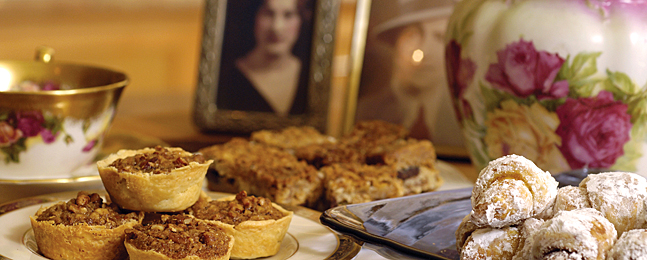
Tanit Sakakini
page 14 of 15
Food and Family
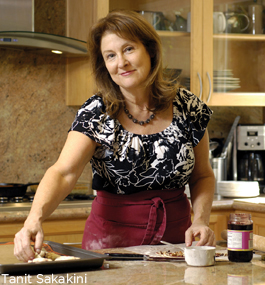 |
| Amy Ostrower ’78 |
“I hadn’t listened long when I realized I had the makings of a book,” says Ostrower, a former journalist. The outcome of her realization was “Nana Lena’s Kitchen: Recipes for Life,” a hybrid of family memoir and cookbook. In it, Ostrower uses her grandmother’s words to capture the flavors of 20th-century Jewish culture. With love and humor, the author incorporates 46 recipes her beloved nana passed along, wrapping each in a tale about growing up Jewish in Virginia.
These are not haute cuisine; indeed, some incorporate a can of fruit or pack of instant pudding. But they are cultural heirlooms, and it’s the element of narration — as, through Ostrower, Nana Lena spins secrets for matzoh ball soup, chopped liver and blintzes — that draws the reader in. Delightfully, Ostrower places each cooking lesson in the context of a holiday or special event.
The tale of Lena’s girlhood introduction to the making of gefilte fish (very much from scratch, via the family’s first bathtub) for Passover is laugh-out-loud funny, while the chapter on her bat mitzvah shouldn’t be undertaken without a hankie on hand. Ostrower provides a glossary to guide the uninitiated through the cultural context as they learn to make tzimmes, tongue with apricot sauce, potato kugel and eingemachts.
Privately published, the book has sold 4,000 copies over the past five years, largely through word of mouth and at Jewish book festivals, more than recouping Ostrower’s investment. But to Nana Lena’s granddaughter, the project transcends money.
“Writing it,” she says, “helped me to keep my grandmother alive. I can see her face and hear her voice every time I open that book.”
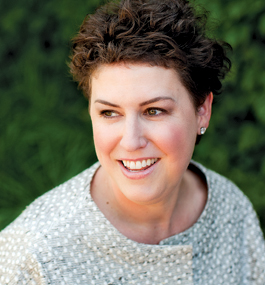
Briana Marie
Aimee Meyer ’95
page 15 of 15
She’ll Bring the Wine
Aimee Meyer ’95 was a senior when she realized her career goal was off-track. Hoping to become a marine biologist, she had spent the previous summer working in a campus biophysics lab by day and as a waitress at the Blue Room in Cambridge, Mass., by night. In the noisy Kendall Square restaurant it dawned on her that science might not be her calling.“I found I did not like being alone in a lab, and I really liked working in a restaurant,” she says. “I realized I needed to work with people.”
That desire is at the heart of Soutirage, a wine merchant company Meyer founded in 2007 with her husband, Chad. Based in an unassuming building just south of downtown Napa, Calif., Soutirage houses some of the world’s rarest vintages, like a 1937 Château Gilette that is one of only 24 bottles worldwide. In the same warehouse, you’ll also find a $20 bottle of Riesling.
Soutirage customers have no need for Robert Parker’s advice. The company’s wine advisers act as personal shoppers to aspiring oenophiles, helping them create fine wine collections tailored to their personal goals. Even in the high-priced atmosphere of wine collecting, cost is not the bottom line. “Any of our clients can throw a thousand dollars on a table,” Meyer says. “We help provide access and knowledge.”
The company also hosts events for its customers, some of whom govern nations and help manage the global economy. Soutirage acknowledges hosting an award-winning party at the World Economic Forum in Switzerland and pouring wine at the Louvre in Paris for French president Nicolas Sarkozy during the e-G8 summit. For the most part, though, Meyer remains steadfastly tightlipped about her A-list clientele.
| — Evan Sweeney |
Tout de Food
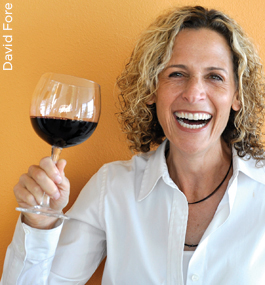 |
| Lisa Schiffman ’85 |
There, she encountered a deep freelance market writing for the content-hungry World Wide Web. Given her Bay Area location, she answered many calls from winemakers asking her to pen educational pieces on how to appreciate their whites, reds and rosés. As she wrote, she learned.
Then a car accident found Schiffman laid up at home looking for adventure. She discovered it at her computer keyboard, where she began ordering unknown foods — from Australian wattleseed to fresh wasabi — and writing about one each week for an informal blog.
In 2006, Schiffman launched tuttiefoodie.com, a blog that now boasts some 25,000 subscribers. Every week, they log on to catch their favorite foodie’s latest morsels on topics that range from raw honey to foraging for porcini mushrooms. A recent issue found her holding forth on water buffalo yogurt, Indonesian snapper and pickling fresh ginger. Recipes, food news, book reviews and culinary travel opportunities have all contributed ingredients for Tutti Foodie’s pages, as has an annual chocolate recipe contest.
“About the only thing I don’t cover is restaurants,” says Schiffman, who is now fully recovered and travels all over Northern California to research her articles. “That’s because restaurant reviews would make the blog too regional. I try to choose topics that would be of interest whether you live in Boston or New Orleans or California.”
